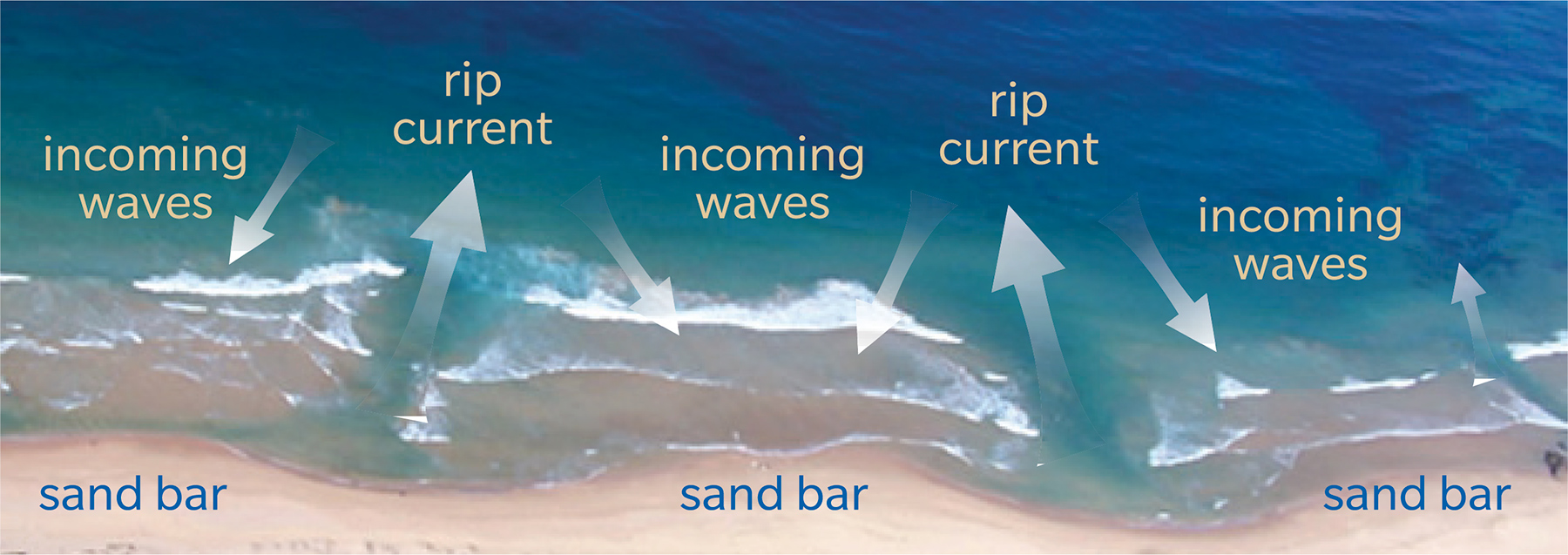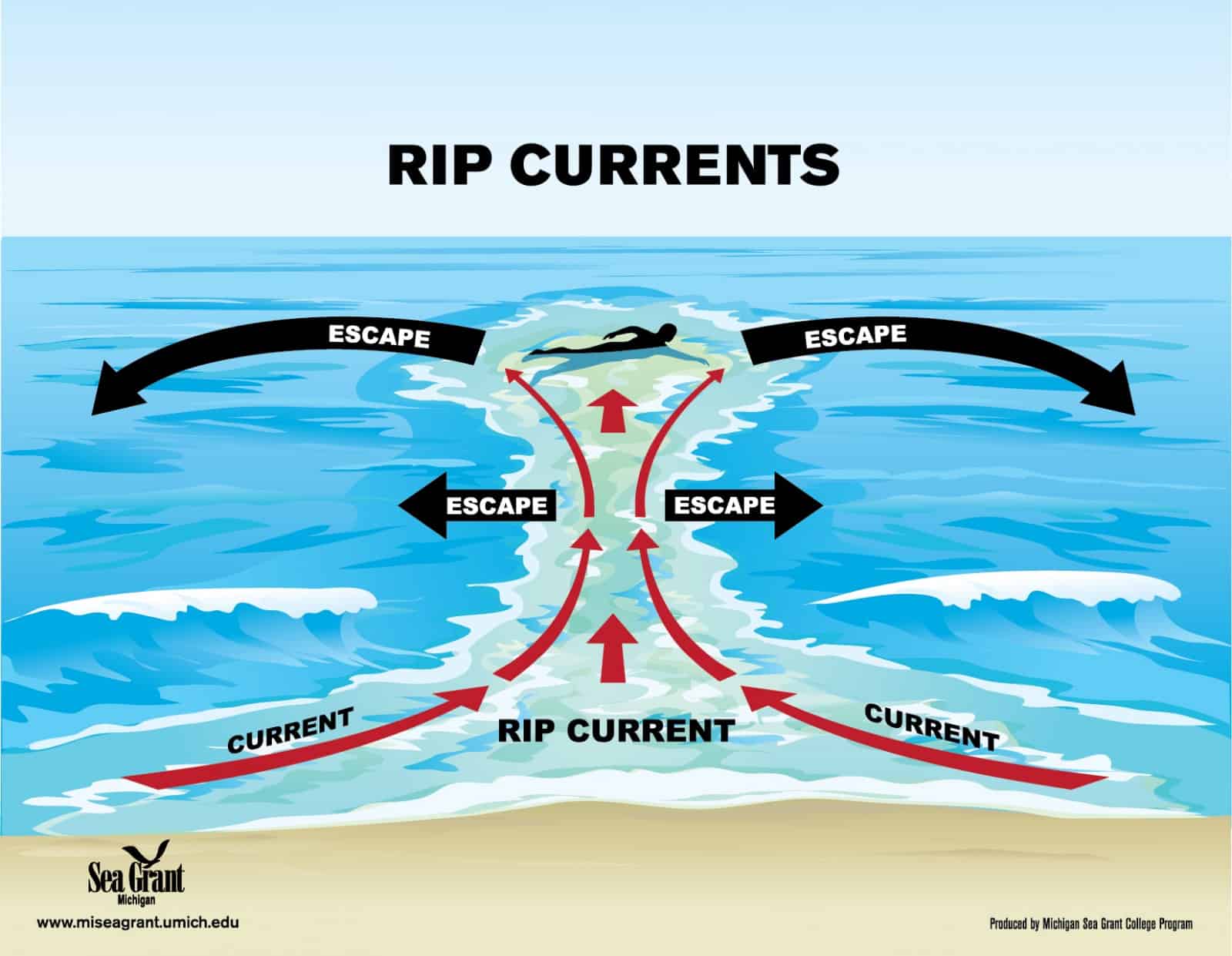Defining Rip Currents

What is a rip current – Rip currents are powerful, narrow channels of fast-moving water that flow away from the shore, often through breaks in the sandbar. They can occur at any beach, but are most common on beaches with large waves and a steep underwater slope.
Rip currents are powerful, narrow channels of fast-moving water that can pull swimmers out to sea. They often occur near jetties, piers, and other structures that disrupt the normal flow of waves. If you find yourself caught in a rip current, don’t panic.
Swim parallel to the shore until you are out of the current. If you are unable to swim, float or tread water until help arrives. Panama City Beach has experienced several drownings this year due to rip currents. Be aware of the risks and take precautions when swimming in the ocean.
Rip currents are formed when waves break near the shore and the water rushes back into the ocean. Some of this water is pushed back towards the beach, while some of it is pulled back out to sea. The water that is pulled back out to sea creates a rip current.
Rip currents, powerful channels of water flowing away from the shore, can be treacherous. These hidden hazards can sweep even experienced swimmers out to sea. For updates on rip current activity and beach conditions, check the panama city beach news.
Remember, if caught in a rip current, stay calm, swim parallel to shore, and signal for help.
Common Locations of Rip Currents
Rip currents can occur anywhere along a beach, but they are most common in the following locations:
- Near jetties or piers
- Near breaks in the sandbar
- Where there is a steep underwater slope
Impact of Rip Currents on Swimmers
Rip currents can be dangerous for swimmers, as they can quickly pull swimmers away from the shore. Swimmers who are caught in a rip current should not try to swim against the current. Instead, they should swim parallel to the shore until they are out of the rip current.
If you are caught in a rip current, do not panic. Stay calm and try to swim parallel to the shore. If you cannot swim, float on your back and wait for help.
Recognizing and Escaping Rip Currents
Rip currents are powerful, narrow channels of fast-moving water that can pull swimmers away from the shore. Recognizing and escaping rip currents is crucial for water safety.
Visual Cues and Warning Signs
Rip currents often appear as breaks in the wave pattern, areas of choppy water, or foam and debris moving seaward.
Escaping Rip Currents
If caught in a rip current, remain calm and avoid panicking. Do not try to swim directly back to shore against the current. Instead, swim parallel to the shore until you are out of the rip current’s pull. Once clear, swim back to shore at an angle.
Importance of Remaining Calm
Panicking can lead to exhaustion and impair judgment. Remaining calm and following proper escape techniques increases your chances of escaping a rip current safely.
Safety Precautions for Rip Currents: What Is A Rip Current

Understanding rip currents is crucial for swimmers, but equally important are the safety precautions that can help prevent dangerous encounters. By following these guidelines, swimmers can minimize their risk of being caught in a rip current and ensure a safe and enjoyable beach experience.
Role of Lifeguards and Beach Patrols
Lifeguards and beach patrols play a vital role in rip current safety. They are trained to identify rip currents, monitor swimmers, and respond to emergencies. If you see a lifeguard or beach patrol, pay attention to their instructions and follow their advice. They are there to help you stay safe.
Using Safety Equipment
When swimming in areas where rip currents are known to occur, consider using safety equipment such as a life jacket or flotation device. These devices can provide buoyancy and help you stay afloat if you get caught in a rip current. It is important to ensure that the equipment is properly fitted and in good condition.
Following Safety Protocols, What is a rip current
Follow the safety protocols posted at beaches and swimming areas. These protocols often include information about rip currents and other potential hazards. By being aware of the risks and following the safety guidelines, you can help reduce your chances of being caught in a rip current.
A rip current is a powerful, narrow current of water that flows away from the shore, often through a break in the sandbar. It can quickly pull swimmers out to sea, and if they are not strong swimmers, they can be in danger of drowning.
Drownings in Panama City Beach are often caused by rip currents, and it is important to be aware of the dangers of these currents before swimming in the ocean.
A rip current is a powerful, narrow current of water that flows away from the shore, often through a break in the sandbar. It can move at speeds of up to 8 feet per second and can carry even strong swimmers out to sea.
If you’re caught in a rip current, don’t panic. Stay calm and swim parallel to the shore until you’re out of the current. For more information on rip currents and how to stay safe in the water, check out the padres vs phillies prediction.
Remember, rip currents are dangerous, so always swim with a buddy and be aware of the conditions before you enter the water.
Rip currents are narrow, powerful channels of fast-moving water that flow away from the shore, often through breaks in the sandbar. They can be difficult to spot, and even experienced swimmers can be caught off guard. If you find yourself caught in a rip current, don’t panic.
Stay calm and swim parallel to the shore until you’re out of the current. If you’re unable to swim, you can try to float or tread water until help arrives. For more information on rip currents, including how to identify them and what to do if you’re caught in one, visit the panama city beach rip current website.